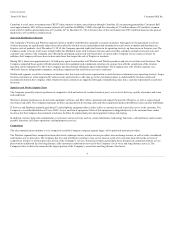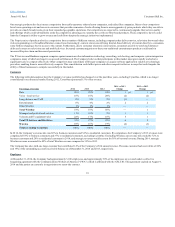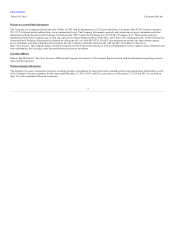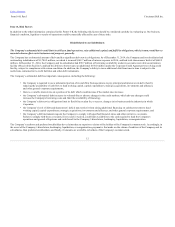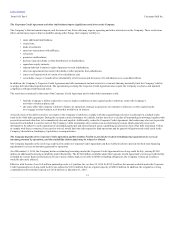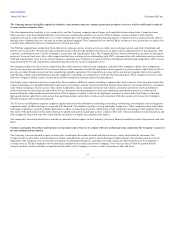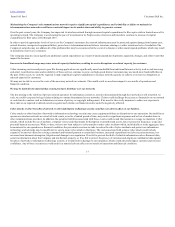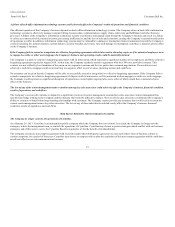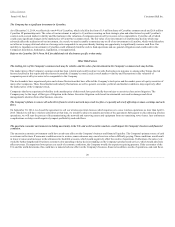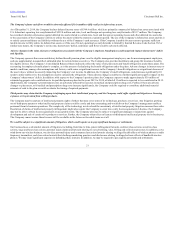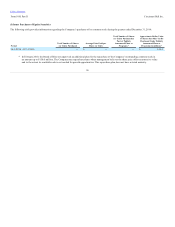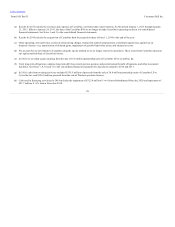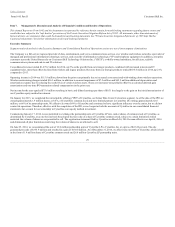Cincinnati Bell 2014 Annual Report Download - page 19
Download and view the complete annual report
Please find page 19 of the 2014 Cincinnati Bell annual report below. You can navigate through the pages in the report by either clicking on the pages listed below, or by using the keyword search tool below to find specific information within the annual report.
Table of Contents
Form 10-K Part I
Cincinnati Bell Inc.
A failure of back-office information technology systems could adversely affect the Company’s results of operations and financial condition.
The efficient operation of the Company’s business depends on back-office information technology systems. The Company relies on back-office information
technology systems to effectively manage customer billing, business data, communications, supply chain, order entry and fulfillment and other business
processes. A failure of the Company’s information technology systems to perform as anticipated could disrupt the Company’s business and result in a failure
to collect accounts receivable, transaction errors, processing inefficiencies, and the loss of sales and customers, causing the Company’s reputation and results
of operations to suffer. In addition, information technology systems may be vulnerable to damage or interruption from circumstances beyond the Company’s
control, including fire, natural disasters, systems failures, security breaches and viruses. Any such damage or interruption could have a material adverse effect
on the Company’s business.
If the Company fails to extend or renegotiate its collective bargaining agreements with its labor union when they expire or if its unionized employees were
to engage in a strike or other work stoppage, the Company’s business and operating results could be materially harmed.
The Company is a party to collective bargaining agreements with its labor union, which represents a significant number of its employees, and these collective
bargaining agreements expired in August 2014. At that time, the Company reached a tentative agreement with the CWA on a new labor contract. This
contract was not ratified by local members of the union on two separate occasions and the two parties have resumed negotiations. If a resolution is not
achieved, a work force stoppage could occur resulting in a negative effect on our revenue, operating income and cash flows.
No assurance can be given that the Company will be able to successfully extend or renegotiate its collective bargaining agreements. If the Company fails to
extend or renegotiate its collective bargaining agreements, if disputes with its union arise, or if its unionized workers engage in a strike or a work stoppage,
the Company could experience a significant disruption of operations or incur higher ongoing labor costs, either of which would have a material adverse
effect on the business.
The loss of any of the senior management team or attrition among key sales associates could adversely affect the Company’s business, financial condition,
results of operations, and cash flows.
The Company’s success will continue to depend to a significant extent on its senior management team and key sales associates. Senior management has
specific knowledge relating to the Company and the industry that would be difficult to replace. The loss of key sales associates could hinder the Company’s
ability to continue to benefit from long-standing relationships with customers. The Company cannot provide any assurance that it will be able to retain the
current senior management team or key sales associates. The loss of any of these individuals could adversely affect the Company’s business, financial
condition, results of operations, and cash flows.
The Company no longer controls the operations of CyrusOne.
As of January 24, 2013, CyrusOne is an independent public company which the Company does not control. As a result, the Company no longer sets the
strategies, selects the management team, or controls the operations of CyrusOne. CyrusOne may choose to pursue strategies which conflict with our business
strategies, and, if this were to occur, the CyrusOne Board is required to act for the benefit of its shareholders.
The Company executed a non-compete agreement with CyrusOne under which both parties agreed not to enter each other's lines of business, subject to
certain exceptions, for a period of four years. CyrusOne may choose to compete with us after the expiration of this non-compete agreement which could have
an adverse effect on our telecommunications business.
19


